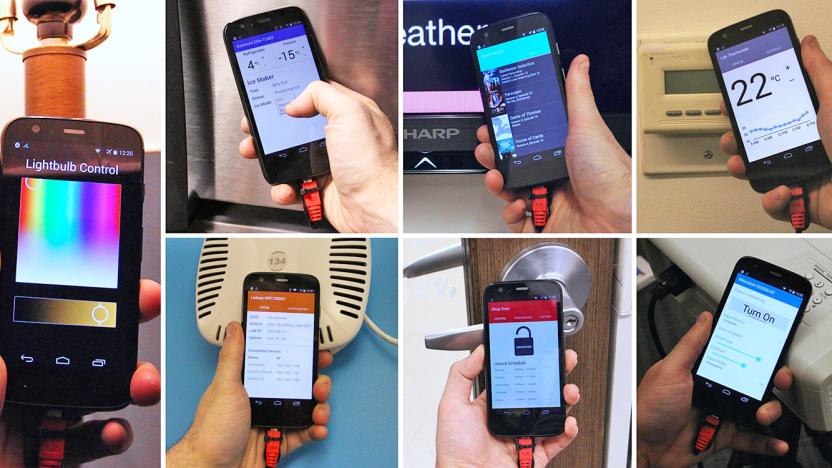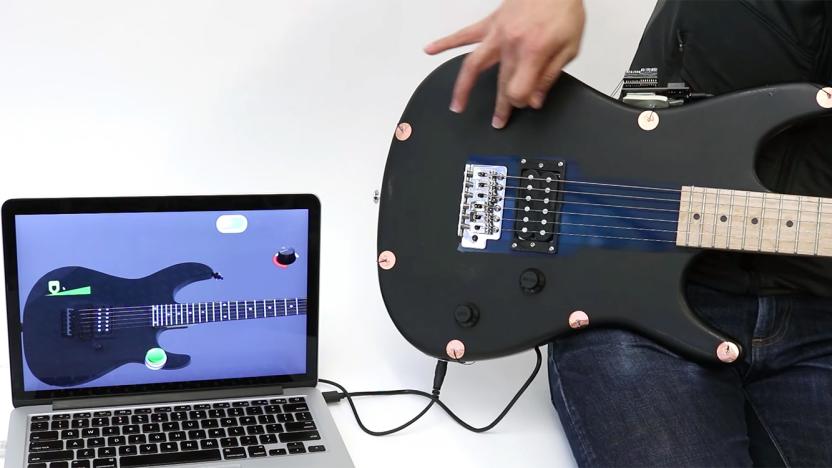chrisharrison
Latest

Future phones will ID devices by their electromagnetic fields
While NFC has become a standard feature on Android phones these days, it is only as convenient as it is available on the other end, not to mention the awkwardness of aligning the antennas as well. As such, Carnegie Mellon University's Future Interfaces Group is proposing a working concept that's practically the next evolution of NFC: electromagnetic emissions sensing. You see, as Disney Research already pointed out last year, each piece of electrical device has its own unique electromagnetic field, so this characteristic alone can be used as an ID so long as the device isn't truly powered off. With a little hardware and software magic, the team has come up with a prototype smartphone -- a modified Moto G from 2013 -- fitted with electromagnetic-sensing capability, so that it can recognize any electronic device by simply tapping on one.

Get ready to 'spray' touch controls onto any surface
Nowadays we're accustomed to the slick glass touchscreens on our phones and tablets, but what if we could extend such luxury to other parts of our devices -- or to any surface, for that matter -- in a cheap and cheerful way? Well, apparently there's a solution on the way. At the ACM CHI conference this week, Carnegie Mellon University's Future Interfaces Group showed off its latest research project, dubbed Electrick, which enables low-cost touch sensing on pretty much any object with a conductive surface -- either it's made out of a conductive material (including plastics mixed with conductive particles) or has a conductive coating (such as a carbon conductive spray paint) applied over it. Better yet, this technique works on irregular surfaces as well.

OmniTouch projection interface makes the world your touchscreen (video)
Sometimes you just want to make notes on your forearm. Put that permanent marker down though, because PhD student Chris Harrison et al at Microsoft Research have created a new system that allows touchscreen interaction on hairy and uneven surfaces. It uses a short-range depth camera instead of the infrared sensor we've seen on similar devices, which allows it to gauge the viewing angle and other characteristics of surfaces being used -- and it can even handle pinch-to-zoom. There's a video after the break, if you fancy a bit of wall-based digital finger painting.

